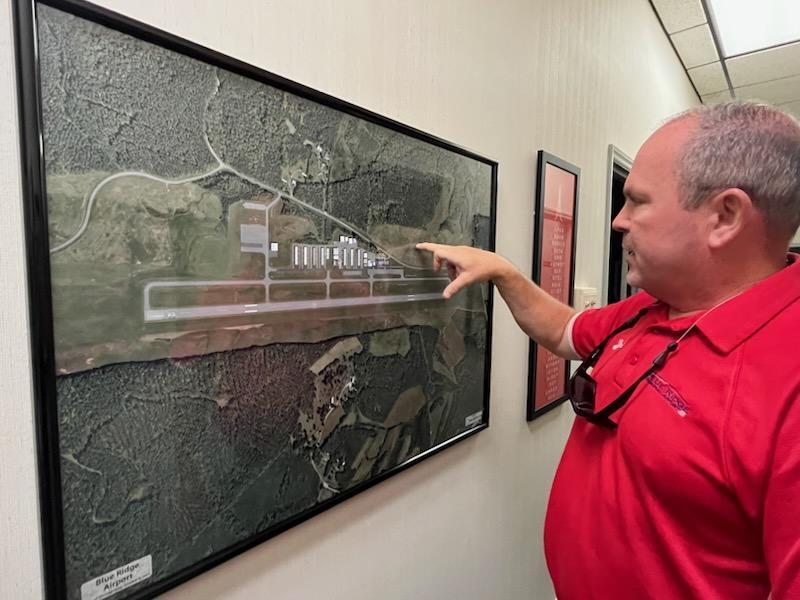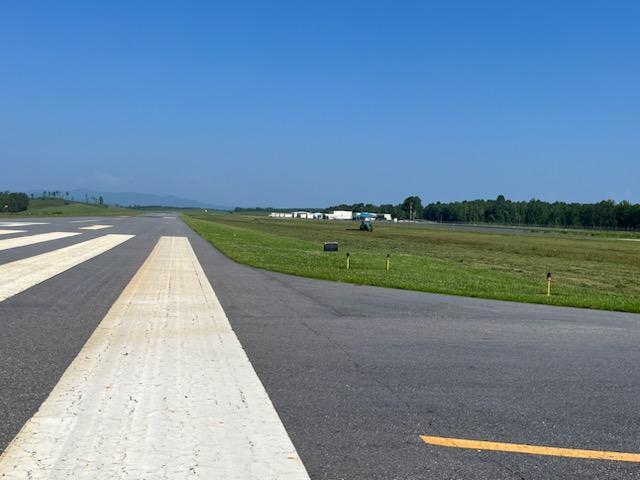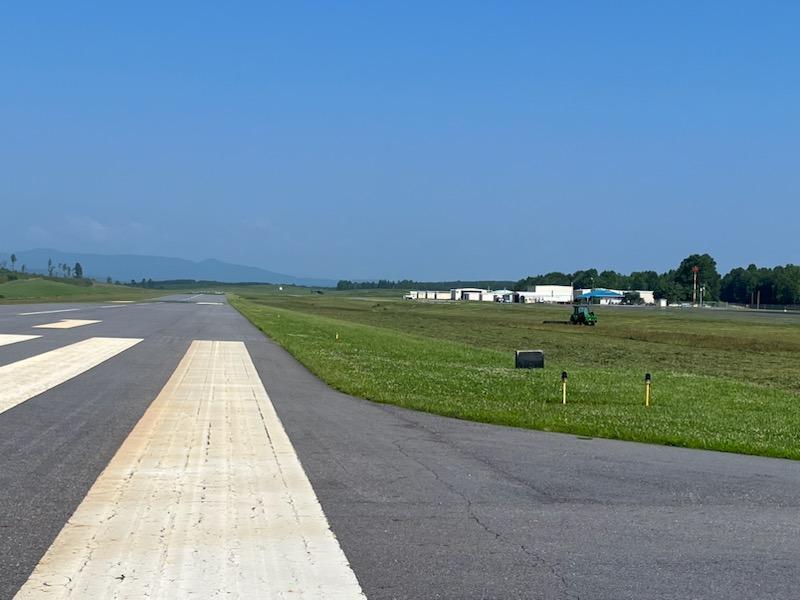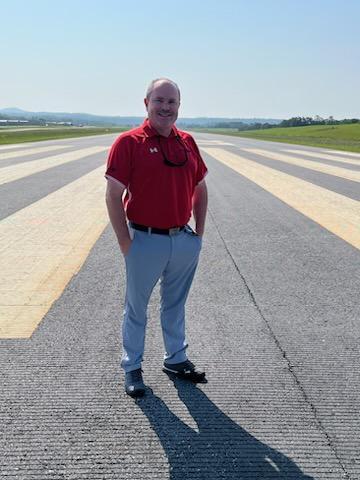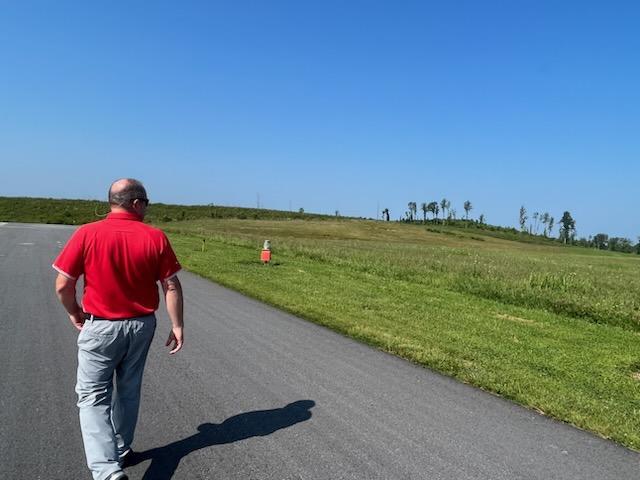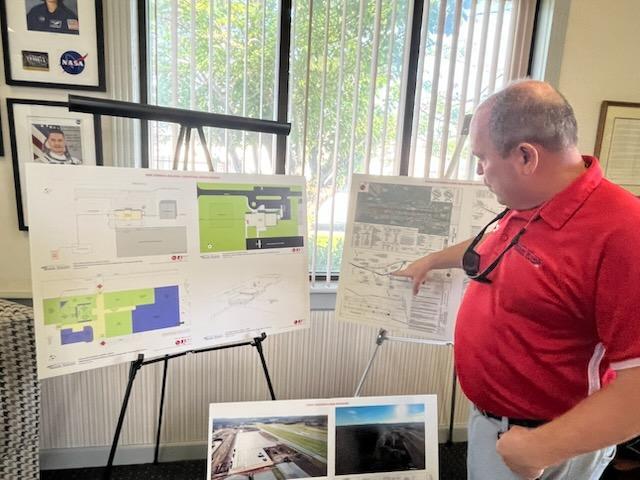The Blue Ridge Regional Airport received $4,718,069 in federal funding to reconfigure an existing taxiway and extend its runway. The funds are part of the Federal Aviation Administration’s (FAA) fiscal year 2023 airport improvement program (AIP) which funds airport infrastructure projects.
Before physically extending the airport’s runway, airport general manager Jason Davis said part of the western part of Airport Road will have to be moved.
“The existing road is going to be too close to the runway itself, so it has to move to the north. It’s in what they call the runway protection zone, so that’s why that has to move over. It’s an FAA safety standard that has to be met,” he said.
About 4,000 feet of road will be built to be outside the runway protection zone. The existing section of the road will be decommissioned and grassed over.
“We will take this road which belongs to the state, build them a new road, and then give it back to them,” he said.
Depending on the weather, Davis estimates it will take at least a year to complete moving the road once construction starts. Once that is complete, the actual runway extension project will begin. The project has been in the works for about 13 years.
Davis said the runway will be extended 1,000 feet to the west to make it safer and more capable at 6,000 feet.
“With length, you have safety. We lose a lot of airplanes to out-of-state airports, particularly Greensboro,” he said and explained that “big airplanes require a certain runway length for a specific condition, and when those conditions aren’t met, they have to go to a longer runway. The numbers don’t lie, the math doesn’t lie.”
It could take two years to finish the runway extension.
“Obviously the weather plays a huge role in moving dirt. So, ideally, it would take only a year, but that’s being a little optimistic, but 18 months to 20-22 months” is more realistic, he said.
Davis estimates the runway extension and moving the road will cost around $18 to $20 million. In addition to the $4.7 million from the FAA, other federal and state funds will be used for the project.
“So, 98 percent of the money is coming from the grant money, which is 90 percent federal, eight percent state, and then two percent from the airport,” he said.
Davis said the return on investment is there for what the airport generates in economic impact.
“It’s not just throwing caution to the wind and hoping. It is a lot of money, but ultimately the return on investment will impact this community. I know that for a fact, it already is,” he said.
He noted there are companies in the area that would not be here if not for the airport.
“They operate corporate jets, that’s how they move from point A to point B because they can do it quicker,” he said.
Davis said the airport sees around 25,000 annually. The high season is in the fall because many visit to “look at the leaves and go to Primland when the leaves are orange.”
On average, 33 airplanes use the airport each day for a total of 66 operations every day.
He added that the runway extension would not have been accomplished without the assistance of the Harvest Foundation, who front-funded the design efforts and the environmental efforts to expedite the process.
“It could not have happened without them and our Board of Directors and their efforts to try and expedite this because originally this was slated for 2031 to begin, which in FAA terms means 2033,” Davis said. “So, here we are cutting the timeline almost in half by being creative and aggressive and having partners like Harvest.”
Following the runway extension, a full taxiway rehabilitation and building of a new airport terminal are planned.
On airport terminals, Davis said the state looks at a 40-year life cycle for a building.
“This one was built in ’87. We’re getting close to that, and it’s something we want to kind of compliment the runway with, a new terminal,” he said.
There also are plans for a complete rebuild of the terminal from the ground up and repurposing the current terminal, he said. The new terminal would be adjacent to the airport’s new ramp and will be three times as big as the current one.
Simply Suzanne’s Café will also be moved into the new terminal, and Davis said he believes the current terminal will become a leasable office space.
“We’ve seen other airports in Virginia accomplish that goal with their own terminal. There’s one in Virginia that has repurposed it into three different companies’ offices, one being a driving school,” he said.
In August, the Aviation Board awarded funds to the Blue Ridge Airport, including $17,720 for gate replacement and $147,473 for Terminal Area Site Preparation (Environmental Coordination/Design).
Davis said the airport wants to keep the building aviation-related with a potential flight school or living quarters or offices for the nearby Air Care, a medical flight team.
“So, if they’re on a 24-hour shift and one of the nurses or paramedics lives three hours away and they’re late one night and then off a day and they have to be back the next day, they can just use this as some type of housing,” he said.
Davis said the final project is to mill and overlay the asphalt of the west-side ramp.
“Then after that, I might have to retire,” he said, chuckling.
